American’s attraction to lever-action rifles goes back to the first such successful design, the Henry, quickly followed by the Model 1866 and Model 1873 Winchesters. These models were not, however, intended to be hunting rifles. Self-defense against humans, singularly or especially in groups, was the purpose. A pocketful of cartridges to thumb into the side loading gate of a Model 66 or Model 73 gave its owner a chance to survive. A muzzleloading rifle or percussion revolver just postponed the inevitable.
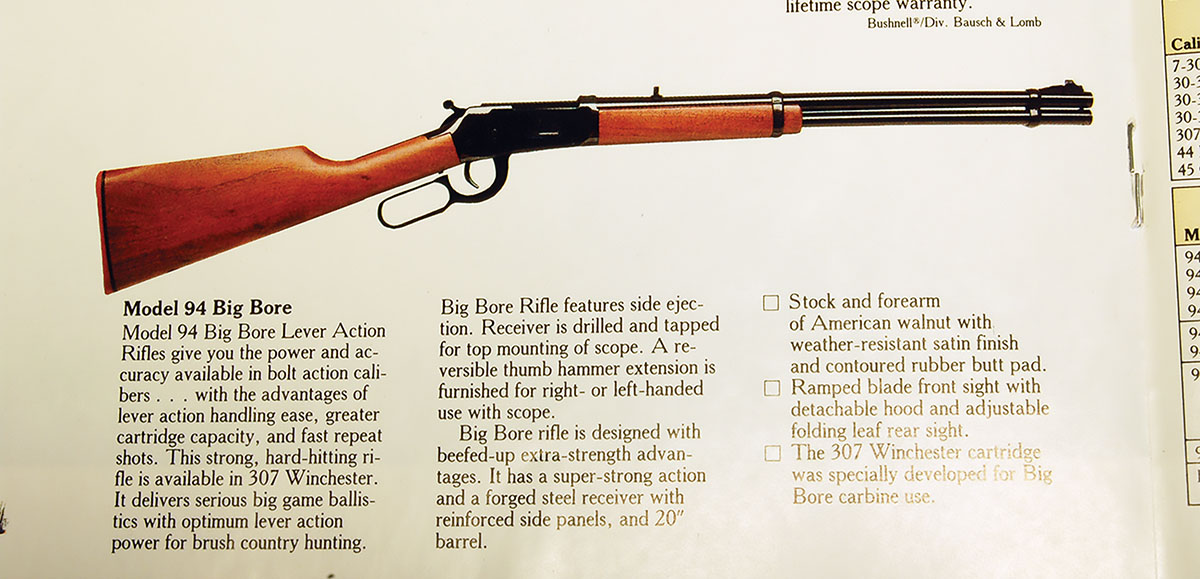
This is an early ad for the Big Bore Model 94 that for some reason doesn’t mention the 356 Winchester cartridge.
Of course, game animals were shot with the rifles, then shot again and maybe a few more times. The black powder 44 Henry and 44 WCF developed about the same muzzle energy as today’s revolvers. The reputation of the Model 73 was known around the world for keeping its owner safe and kept it in production for 50 years.
Winchester’s Model 1876 chambered larger cartridges, but the toggle-link action was not the strongest action and was not suitable for larger, more powerful cartridges. John Browning’s big Model 1886 action finally gave Winchester the powerful hunting rifle it needed.
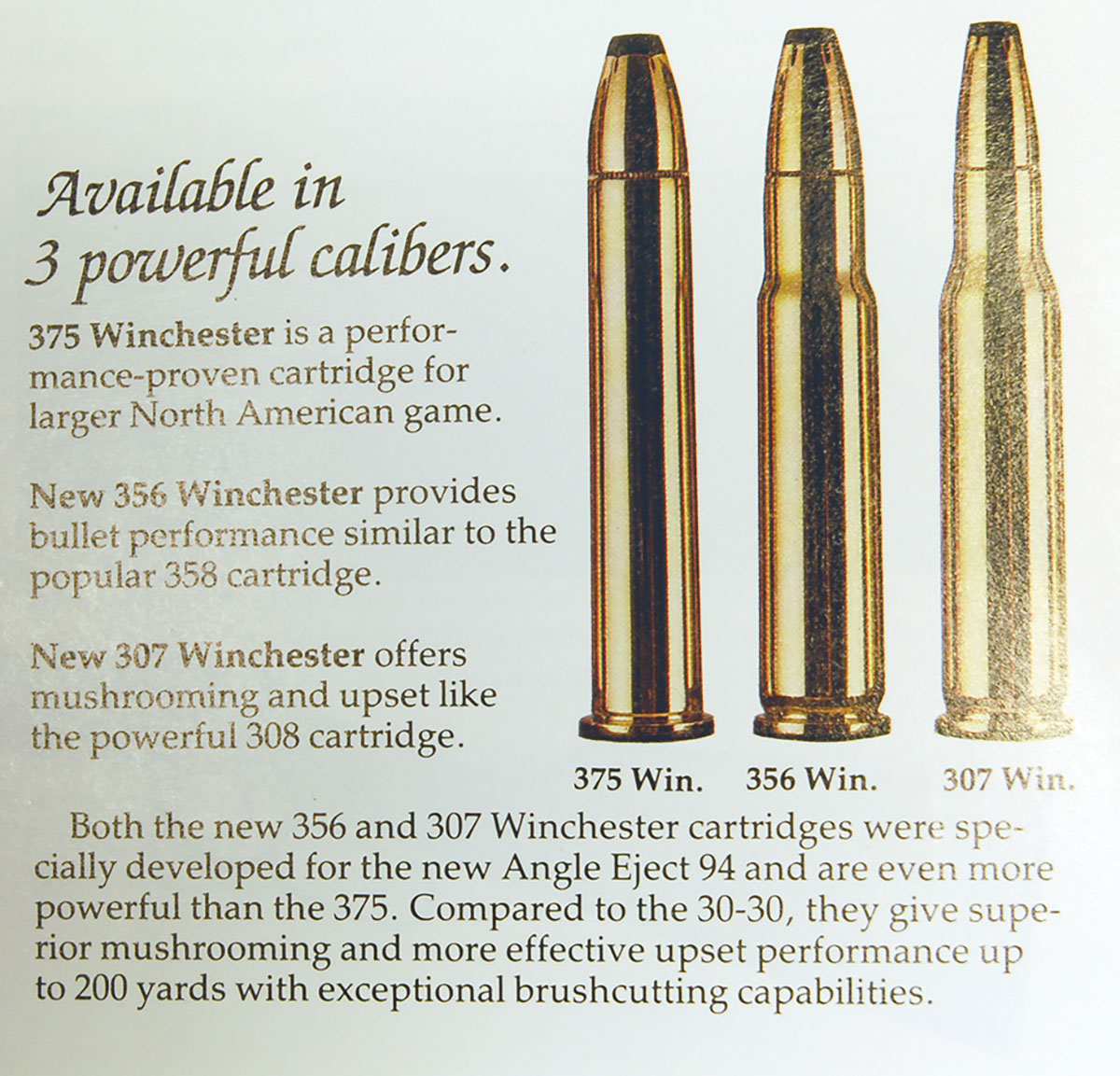
An advertisement for the new Big Bore Model 94 cartridges. Note the 356 Winchester provided “similar” bullet performance to the 358 Winchester.
When World War I ended, the gun experts proclaimed the era of the lever-action hunting rifle was over. The new bolt action would replace it. Winchester introduced the bolt action Model 54 in 1925, then went back to making lever-action hunting rifles in five new models.
Much the same was true after World War II. The noisiest of the gun writers stated flatly that now was the time to throw away our lever gun and replace it with a scope-sighted bolt action. Winchester responded by resuming Model 94 production and introducing perhaps the pinnacle of levergun design, the Model 88, in 1955. This rifle had a rotating breech bolt like a Mauser, but driven by the familiar loop lever. The stock was one piece. The receiver top was solid making scope mounting easy. A detachable box magazine allowed the use of pointed bullets. Breech pressure was the same as bolt guns.
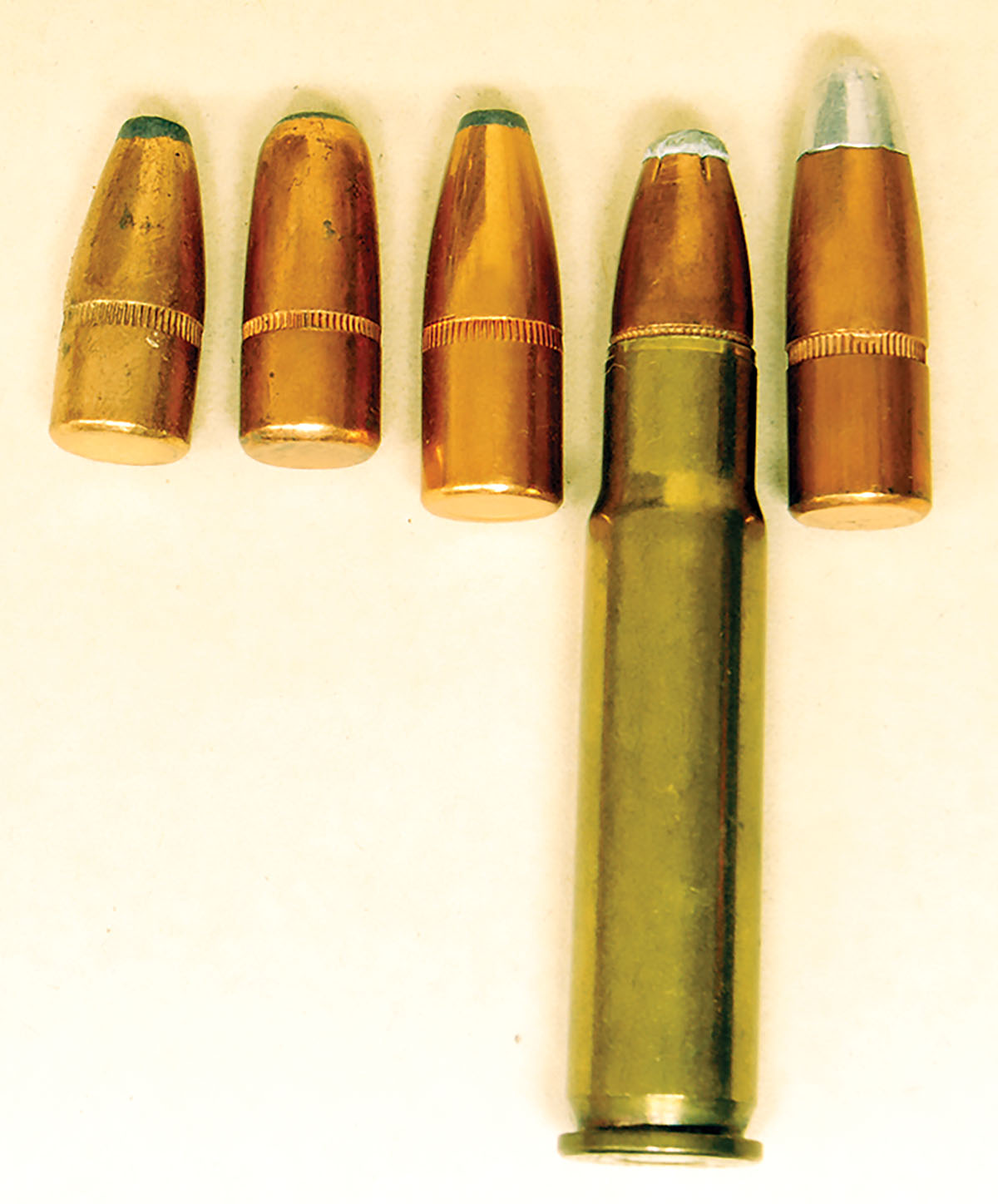
The seating depth of the 356 Winchester is determined by the location of the cannelure and the length of the Model 94 action. The 180-, 200- and 220-grain bullets to the left of the cartridge will work while the 250-grain bullet on the right will not.
Of equal importance was the Model 88’s cartridges. First (1955) was the new NATO and U.S. Military 7.62x51mm that was replacing the 30-06. This was a marketing coup of indescribable proportions. Being the U.S. Army cartridge guaranteed large sales at home. Having the Winchester name didn’t hurt either. It had to sell – and it did.
The second most popular Model 88 round was the 243 Winchester for obvious reasons. Another new cartridge (1956) was more problematic. It was titled 358 Winchester. The published muzzle velocity of a 200-grain Silvertip was 2,530 feet per second (fps) for 2,840 foot-pounds of energy and a 250-grain Silvertip at 2,250 fps for 2,810 foot-pounds of energy. Quite surprisingly (or maybe not), the 200-grain Silvertip equaled the speed of the same weight in 348 Winchester factory loads. The 250-grain Silvertip was only 100 fps behind. At the time, the 348 Winchester was considered perhaps the best short-range elk/bear/moose levergun round available.
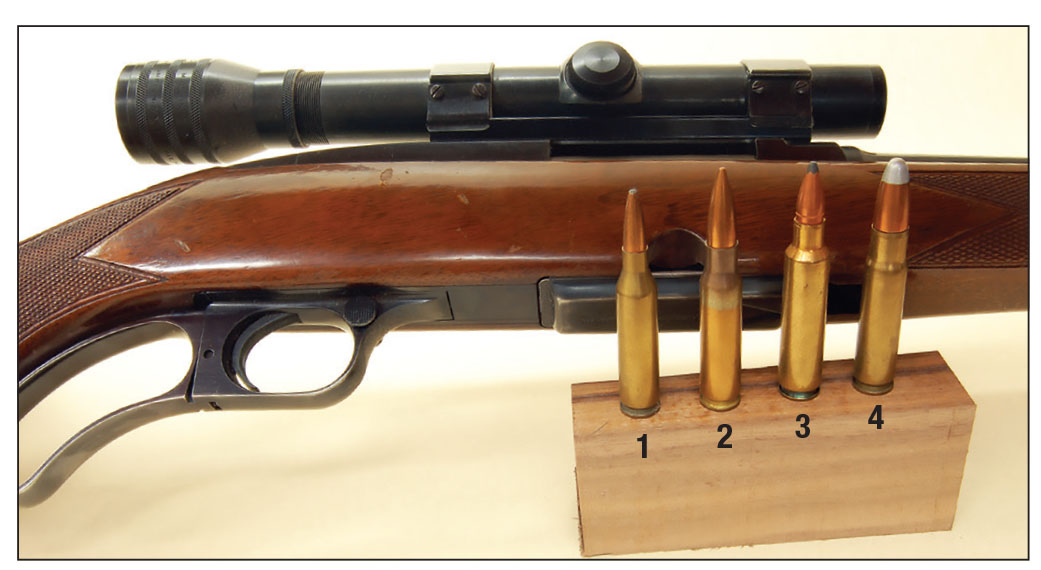
The Winchester Model 88 and its cartridges: (1) 243 Winchester, (2) 308 Winchester, (3) 284 Winchester and (4) 358 Winchester. It was discontinued four years before the Big Bore Model 94 arrived. Gil thinks it was at least twice the rifle the Big Bore ever hoped to be.
The Model 88 rifle and carbine sold well, but the 358 Winchester did not. The chronicles tell us that it was dropped from the Model 88 in 1962. In 1973, sales of the Model 88 fell off leading to its demise in 1975. The reason for all this background history is to show the end of more than 100 years of levergun development, resulting in the perfection of the design. Yes, I have shot Browning BLRs, Sako Finnwolfs and Savage 99s. None measured up to the Model 88 in 308 Winchester I have owned since 1966. The bolt action and semiauto would be the hunting rifles of the future. Some at Winchester, however, would not give up.
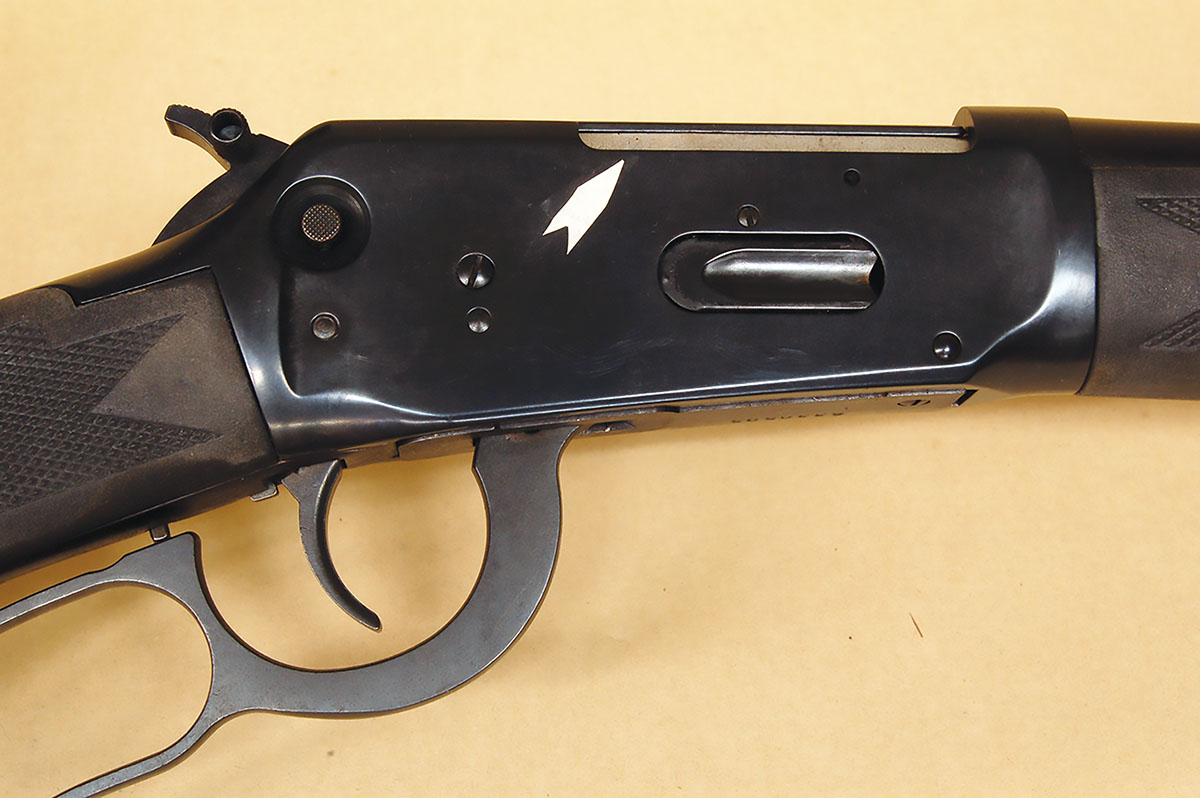
The arrow points to the lowered right receiver sidewall of the Angle Eject Model 94.
In 1979, Winchester announced what it called the Big Bore M94, a Model 94 chambered for a 38-55 WCF, whose case had been shortened .065 inch. The maximum average pressure (MAP) was set at 52,000 CUP (crusher), while the 30-30 Winchester MAP was 38,000 CUP. To withstand the increased pressure, the Model 94 action was made thicker around the locking lug recess. Stranger still was that the new round, named 375 Winchester, produced about 25 percent less energy than the discontinued 358 Winchester in the Model 88 levergun! What was going on?
Then, 1983 saw two new cartridges appear in the Big Bore M94, the 307 Winchester and the 356 Winchester. Those numbers sound familiar because the just-discontinued Model 88 was chambered for the 308 and 358 Winchester cartridges. The new rounds were exact copies of the former cartridges but with 30-30-dimensioned rims added. They are not blown-out 30-30s as was/is sometimes stated. The base diameter was increased to the nominal .470 inch of the 308 Winchester as opposed to .416 inch for the 30-30. The MAP also increased to 52,000 CUP, the same as the 308 Winchester. All that was left of the 30-30 was rim diameter, rim thickness and loaded cartridge length to accommodate the Model 94 action.
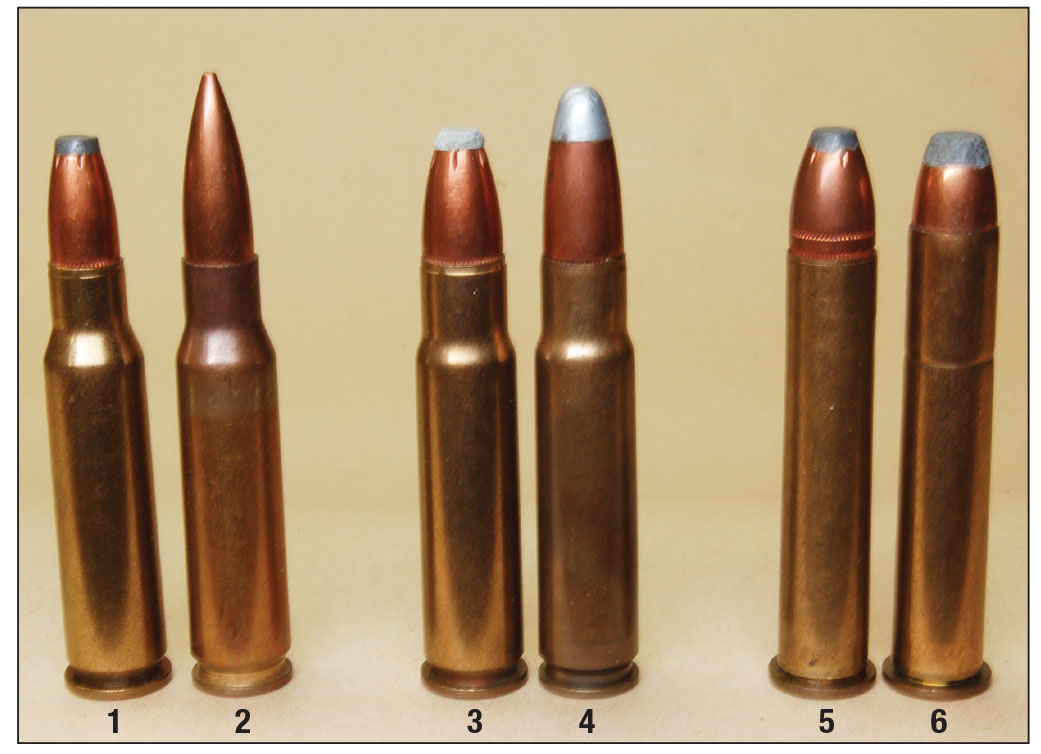
Big Bore Model 94 cartridges and the rounds they are patterned after: (1) 307 Winchester, (2) 308 Winchester, (3) 356 Winchester, (4) 358 Winchester, (5) 375 Winchester and (6) 38-55 Winchester.
It might also be mentioned that at the time, Winchester announced the Angle Eject feature to the Big Bore M94 (standard Model 94s got the feature two years later). Angle Eject lowered the right receiver wall a bit and repositioned the extractor and ejector to throw empty cases out the side of the receiver, more or less missing a scope sight for which the receiver was drilled and tapped.
We are only interested in the 356 Winchester here. Initial ammunition offerings from Winchester (the only producer I could find) number exactly two. A 200-grain softpoint was listed at 2,460 fps muzzle velocity dropping to 2,114, 1,797 and 1,517 fps at 100, 200 and 300 yards, respectively. The energy numbers were 2,688, 1,985, 1,434 and 1,022 foot-pounds. This gave the 356 Winchester a drop figure of 7 inches at 200 yards from a 100-yard zero. Compare this to 12.1 inches for the same bullet from a 35 Remington and 6.5 inches for the 358 Winchester. Consider also that these figures were obtained in 24-inch test barrels while Model 94 Big Bores had 20-inch barrels. A 9 to 10 percent velocity loss was reported by those chronographing the Big Bore Model 94 in the 1980s.
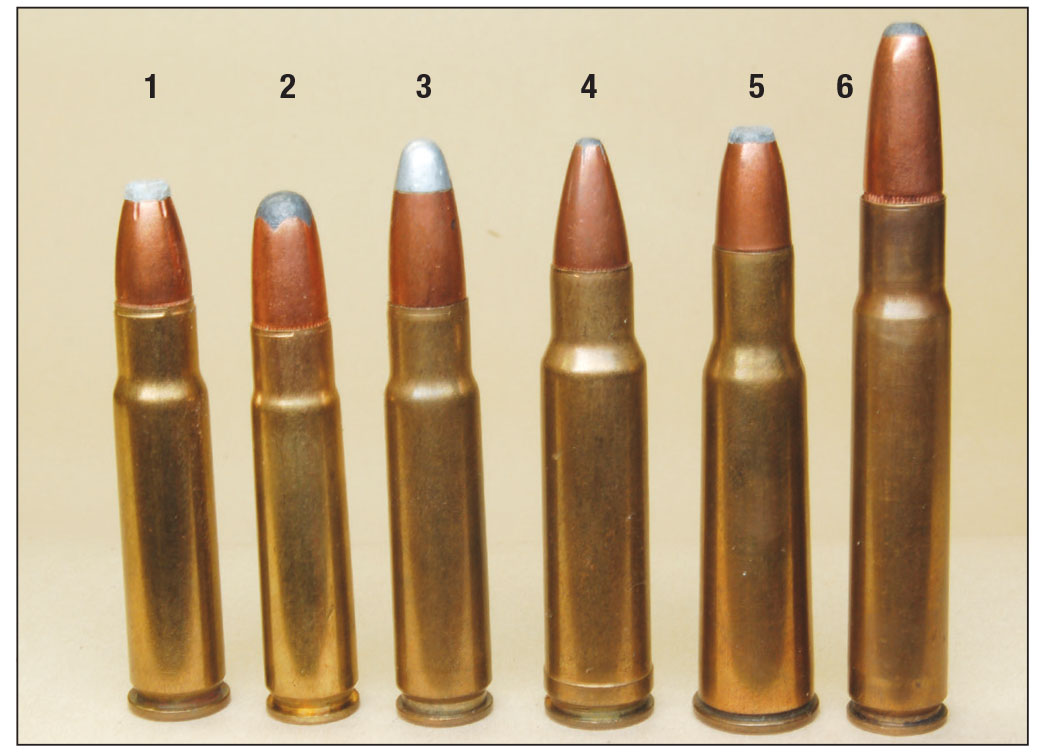
Cartridges similar to the (1) 356 Winchester and available at the same time include the (2) 35 Remington, (3) 358 Winchester, (4) 350 Remington Magnum, (5) 348 Winchester and (6) 35 Whelen.
A second loading used a 250-grain softpoint at 2,160 fps muzzle speed then 1,911, 1,682 and 1,416 at 100, 200 and 300 yards. Muzzle energy came to 2,591, 2,028, 1,571 and 1,210 foot-pounds at 100, 200 and 300 yards. Muzzle velocity was not higher because the loaded cartridge length was limited by the Model 94 action. The extra quarter inch seating depth for the 250-grain bullet took up valuable powder space. The 250-grain loading was dropped in 1987, reappeared in 1990, then disappeared for good in 1995.
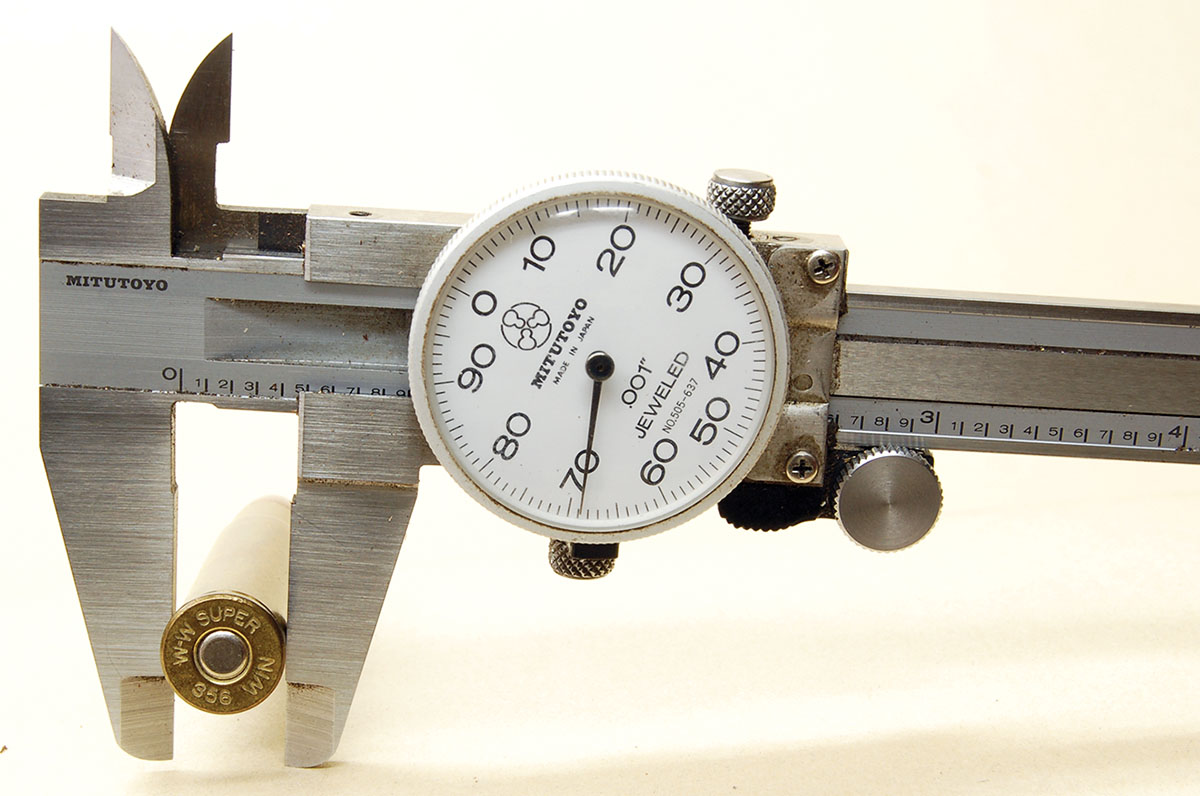
The base of the 356 Winchester is a nominal .470 inch of 308 Winchester not .416 inch of the 30-30 case.
Performance reports on game are few, just deer shot at 80 to 130 yards. All fell over quickly, but then, when was the last time you read that an animal shot with a new rifle and/or cartridge galloped into the forest primeval never to be seen again? This is really not a surprise considering the 356 Winchester 200-grain bullet has some 500-600 foot-pounds more energy than the 35 Remington and a couple less than the 358 Winchester in the Model 88. However, the last two rounds had carbine length guns available. These would be lower in muzzle velocity than factory figures. Enough variables are added that riflefolk could never agree on which combination was “best.”

Gun shows are a good place to find old .35-caliber bullets to use in practice loads as it seems like there is little demand for them today, especially out west.
How many Big Bore Model 94s were made is not known as the chronicles tell us their serial numbers were mixed in with the 30-30 Model 94s. It can’t be many. I have only seen a couple for sale over the years. Ammunition for the 356 Winchester was still listed in the 2020 Winchester catalog (the last printed) with exactly the same load as in 1983. About all that can be said for the round is that it puts about 30 percent more energy on target than the 35 Remington – if that is important. Looking for factory ammunition today is like looking for meteorites in a school parking lot.
In our panicked ammunition market, many rounds have been dropped or soon will be. The 356 Winchester will soon be a handloaders cartridge only. Fortunately, its unique case can be formed from 444 Marlin brass.
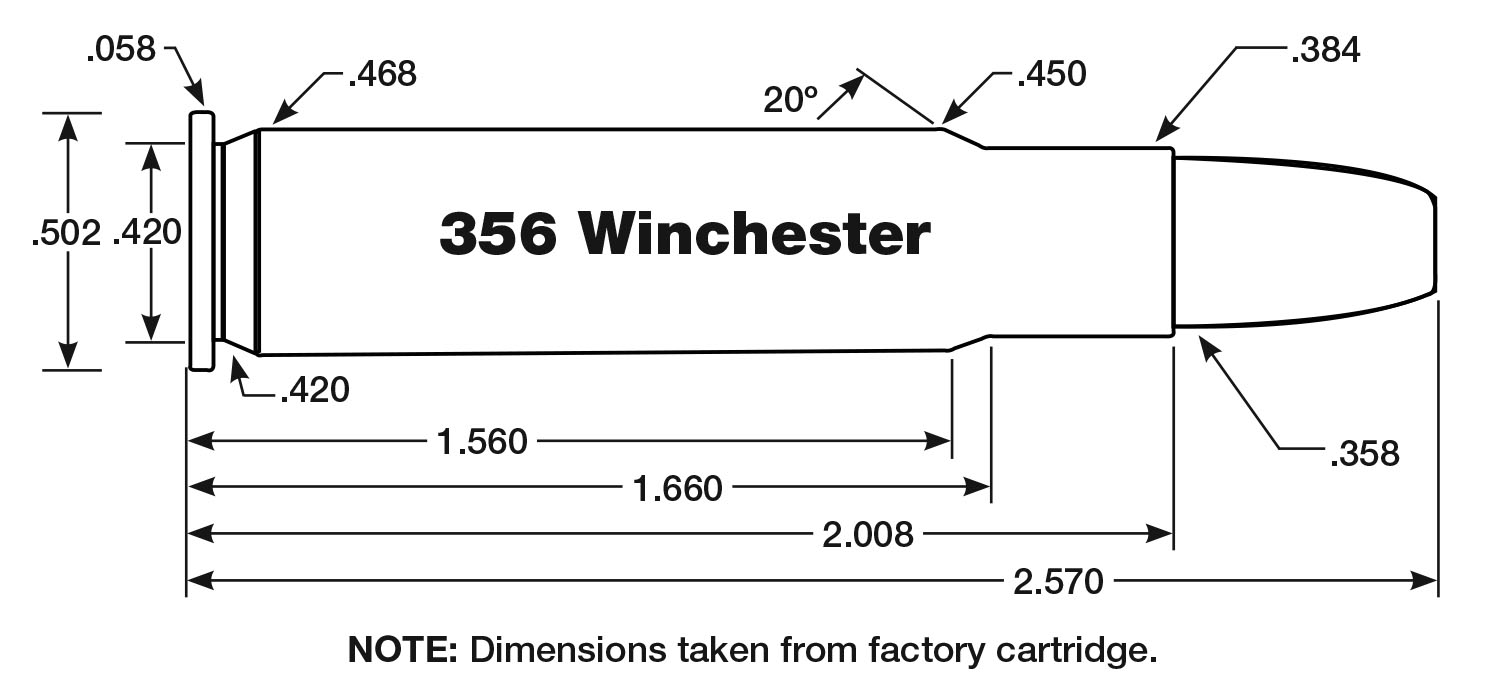









.jpg)


